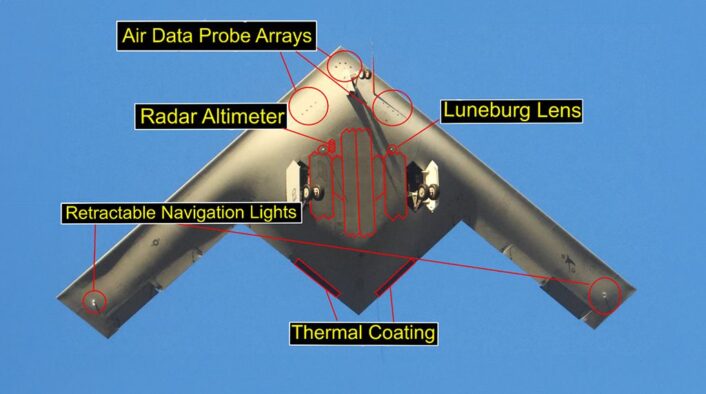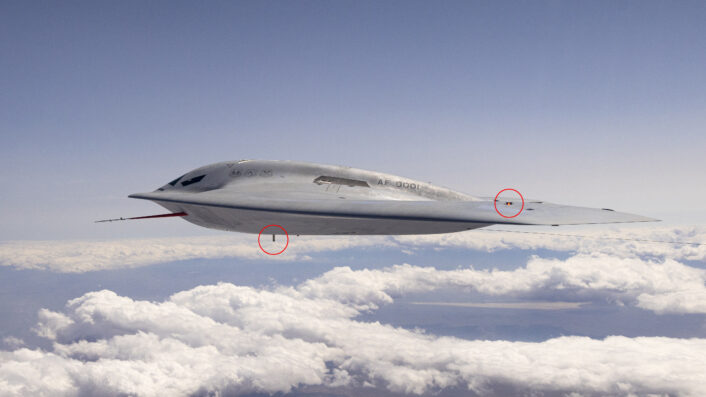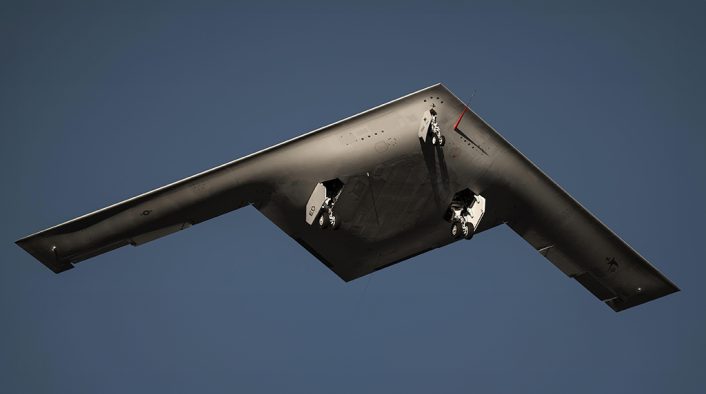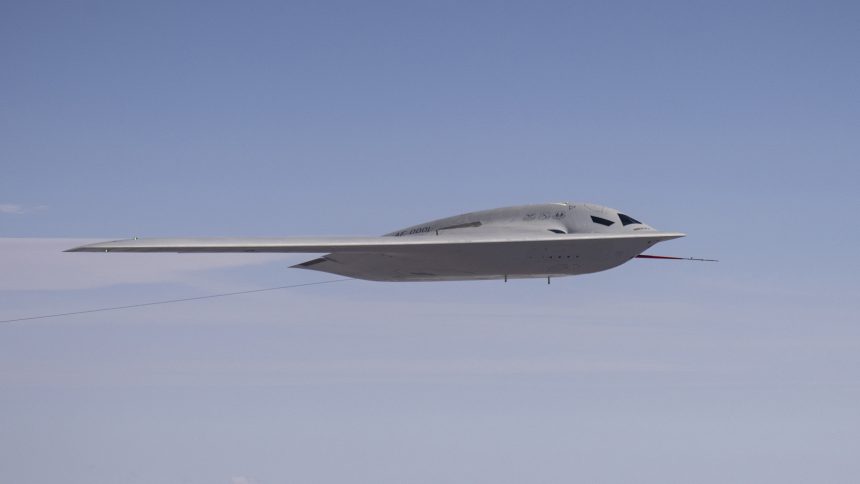One day after the U.S. Air Force released the first air-to-air image of the B-21 Raider bomber, Northrop Grumman has made available another one. Here are all the details we have noticed so far.
As reported, on May 22, 2024, the U.S. Air Force released the first official photograph of the B-21 Raider in flight as part of a “package” of three images and a press release that provided an update about the testing campaign of the 6th generation bomber.
On May 23, 2024, yet another photo was released, in this case by Northrop Grumman. The latest image is taken from the right hand side of the stealth bomber and is probably even better than the previous one in terms of overall light. Moreover, the angle is slightly different too.
The air-to-air photograph highlights some peculiarities of the new bomber, including the aircraft’s leading edge and its nose, that appears to be more pronounced than the Hawk beak‘s nose and chine-line of the B-2 Spirit.
The image also clearly shows the jet’s cockpit layout with the small side windows and the the forward windscreen, optimized for aerial refueling.
The aircraft, serialled AF 0001 (and named “Cerberus”) features retractable antennas, navigation lights and luneburg lenses, along with the removable air-data probe that we had already identified in photos taken from the ground during the first flight in November 2023.

In particular, the protrusions on either end of the flying wing are retractable navigation lights, similar to those on the B-2. In normal operations, the outboard navigation lights remain deployed, extending out from the wing and affecting the radar cross section of a stealth aircraft. Therefore, the B-2 typically retracts these lights during combat missions. The B-21 will eventually use the same type of retractable navigation lights.
Another antenna visibile on the bottom of the fuselage can be a retractable RCS Enhancer (also known as radar reflector, or Luneburg Lens), Stealth aircraft usually fly with radar reflectors to be visible on radar unless low detection is necessary.

Because of the aircraft’s stealth design, its pitot tubes and static probes have an unconventional shape. Similar to the B-2, the B-21 employs three sets of four air data probes on its nose and cheeks. While any aircraft requires pitot tubes and static ports to measure airspeed, altitude, and vertical speed, these usually protrude into the airstream for accurate readings. However, conventional pitot static tubes would compromise a stealth aircraft’s radar signature. Therefore, the B-2 uses flush-mounted static ports and data correction to replicate the function of a traditional pitot tube. Since the air data probes are positioned at an angle to the local airflow, multiple sensor arrays are necessary to correct for measurement inaccuracies. The B-21 appears to have a similar air data port setup as the B-2.
The aircraft feature a dorsal aerial refueling receptacle (most probably similar to the rotating one in use on the Spirit).
In general, as seen on other aircraft, the “trailing cone” is typically a nylon cable with a stabilizing cone deployed during flight. It extends about 50 meters, or 1 to 1.5 times the wingspan, behind the aircraft to measure the ambient atmospheric pressure (static pressure) accurately in the undisturbed airflow outside the turbulence generated by the aircraft—a crucial parameter for pilots.

Interestingly, the B-21’s exhaust section, typically a sensitive low-observable feature, are entirely hidden in both the U.S. Air Force and Northrop Grumman images.








